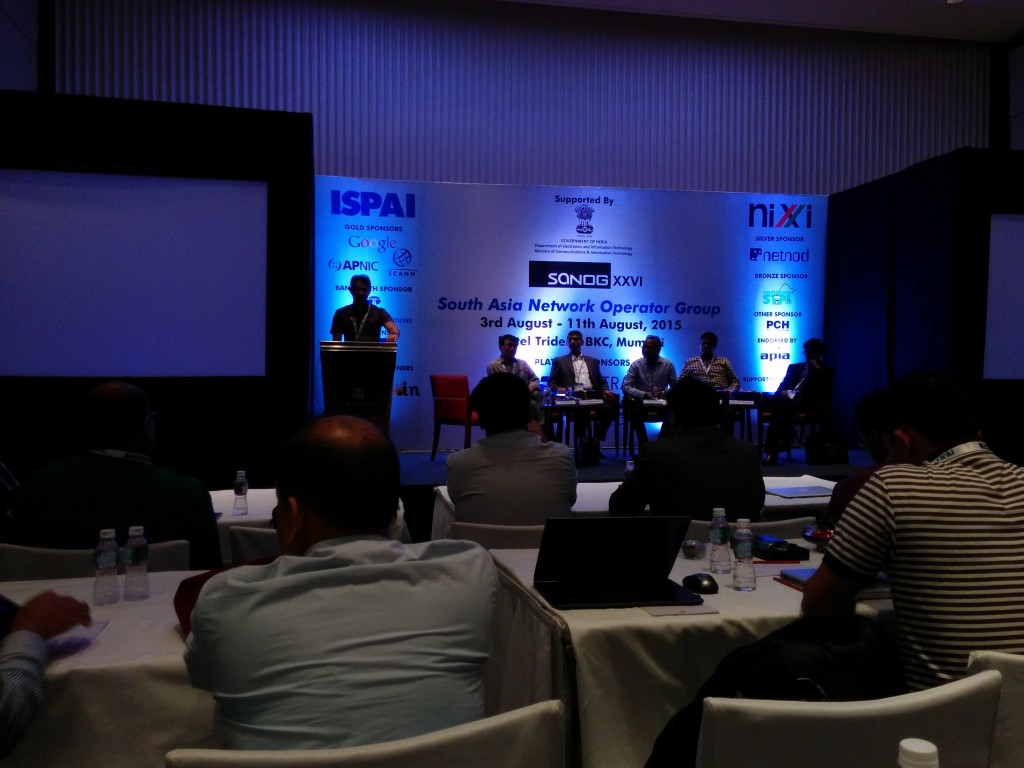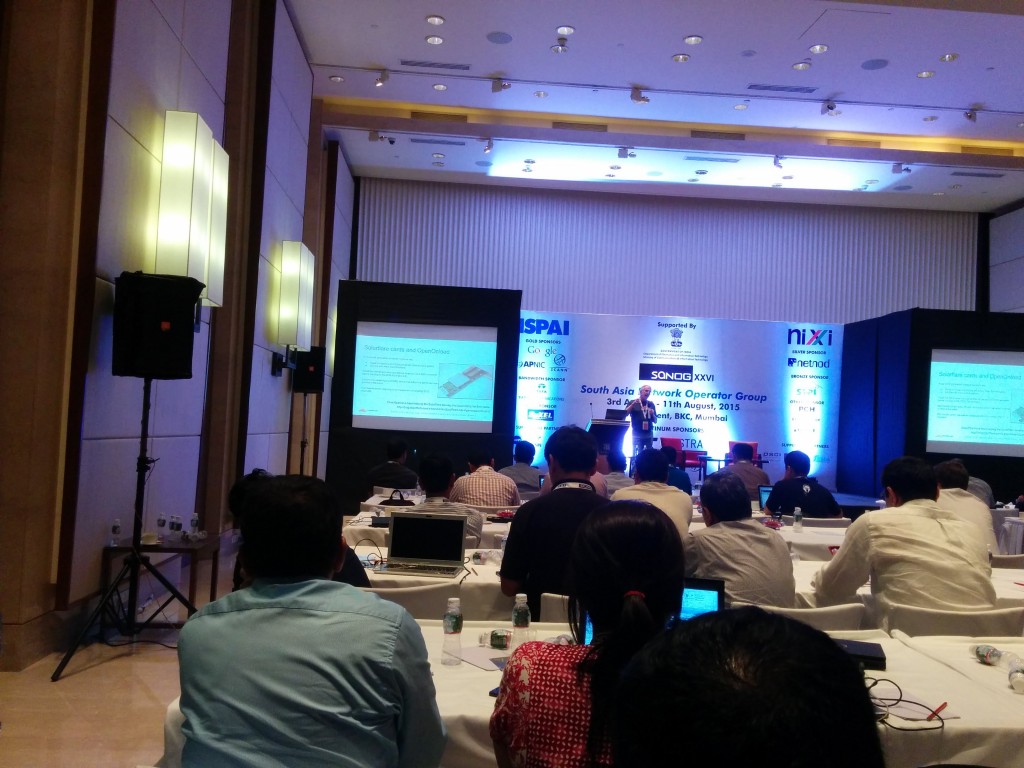Talking about root DNS servers and anycast
Talking about root DNS server’s anycast at APNIC42. YouTube here.
Talking about root DNS server’s anycast at APNIC42. YouTube here.
First and foremost before talking about APRICOT, I must say I am deeply moved with impact Rohtak (and Haryana) as whole had because of recent Jat agitation. What I find extremely depressing is way current Govt. of Haryana completely failed to control it and the way previous Govt. ministers did best in their interest and completely against the interest of people of Haryana. For now quite hopeful with news that Mr Prakash Singh (one of my favorite IPS officers) who did quite well during his various terms is looking into failure of police. More details about the news here. I will write more on this later on, not good time right now since tensions have yet to get normal.


Just finished with SANOG 26 conference and tutorials. It went very nice. Interestingly this time conference did not start early morning like it did in SANOG 24 at Noida. It was rather late in afternoon. Also, on very good note - there were less Govt. bureaucrats to bore attendees with usual stuff they always talk about but have very little idea. One specific interesting presentation was Opportunities and Challenges for Broadband Wireless in India by Prof Abhay Karandikar (from IIT Mumbai). In start I felt it to be usual crappy 5G talk but later realized it was much more interesting. I loved the idea “Have 2Mbps everywhere static broadband and not some absurd number on mobile wireless broadband as we hear in case of 3G/4G. Although 2Mbps now is much slower and I would rather suggest that we target for 10Mbps everywhere (something which can be supported by copper/coax/fiber hybrid) but anyways it was nice refreshing talk. His thoughts were interesting but mostly impractical since had high dependence on useless project like NOFN. For the next part, we had a nice theme of keeping network simple which everyone kind of liked. Simplicity in Network Design & Deployments by Dany Pinto (from Colt) and Unified Forwarding with Segment Routing by Mohan Nanduri (from Microsoft Azure Cloud WAN team) were part of that. Santanu Dasgupta gave a presentation about Challenges of L2NID based Metro-E Architecture for vCPE/NFV Deployments and kind of confused everyone. :P
Last week I saw an interesting post at APNIC mailing list about IRINN (recently formed NIR in Indian region).
Poster Jimmy was concerned about IRINN’s netname
inetnum: 0.0.0.0 - 255.255.255.255
netname: IRINN-BROADCAST-ADDRESSES
descr: Broadcast addresses
descr: These addresses cannot (should not) be routed on the Internet.
country: IN
admin-c: IH1-IN
tech-c: IH1-IN
status: ALLOCATED PORTABLE
remarks: send spam and abuse report to info@irinn.in
mnt-by: IRINN-HM
mnt-irt: IRT-IRINNHM-IN
mnt-lower: IRINN-HM
changed: hostmaster2@irinn.in 20130420
source: IRINN
As per first two lines entire IPv4 address space i.e 0.0.0.0/0 (ranging from 0.0.0.0 to 255.255.255.255) was put as IRINN-Broadcast while expected was IANA broadcast (since IANA sits on top in this RIR & NIR hierarchy).